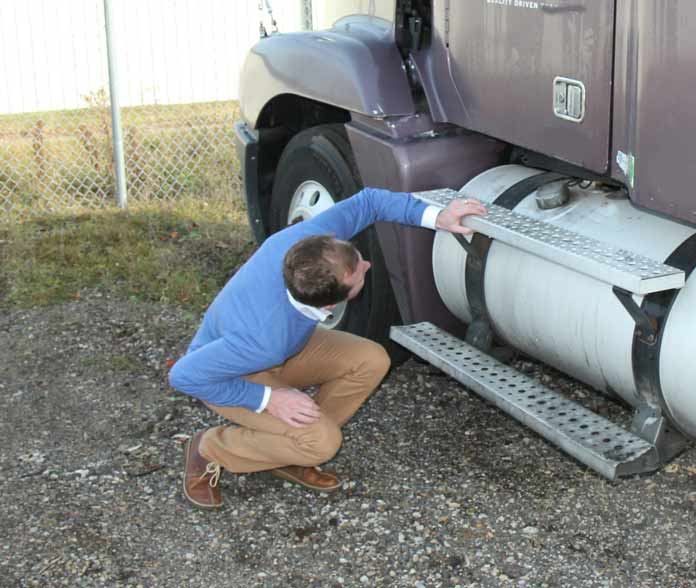A spinal cord injury settlement can be in the millions. Contact our personal injury lawyers about a lawsuit for money if you were paralyzed in a crash. Use the form below to request a free consultation.

Settlement if You Were Paralyzed in a Crash
Our job as your attorneys will be to get you a large settlement if you were paralyzed in a crash. This means getting money for all expected future medical expenses, lost income and other losses. It also means getting pain and suffering compensation, which includes amounts for disability, emotional suffering and loss of quality of life.
Your lawyer needs to aggressively pursue those responsible for your injuries, knowing that these are often multi-million-dollar cases. This is not a time to hire a lawyer because he or she seems nice. You need the best attorney you can find.
What is a Spinal Cord Injury?
The spine, also referred to as the “backbone,” is not one bone, but several bones, called “vertebrae,” that extend from the back of the head down to the hips. Between these vertebrae are disks that cushion the vertebrae and keep them in place. The spinal cord runs through these vertebrae.
The spinal cord is a collection of densely packed nerves that come from the base of the brain and branch out to the rest of the body. The brain sends messages though it that control motor function, sensory function and automatic function.
Nerves in the spinal cord send and receive messages from the brain. When the cord is injured, the ability to send and receive these messages and there is paralysis, either partial or total. The vertebrae in the spine are commonly split up into five sections with each vertebrae being assigned a letter and number according to its location.

There are four regions of the spinal cord:
- the cervical region (C1 – C8), which is in the neck;
- the thoracic region (T1 to T12), which runs through the upper back;
- the lumbar region (L1 – L5), which is in the mid-back region; and
- the sacral region (S1 – S5), which protects the nerves going to the pelvic organs.
The coccygeal is the tailbone.
Damage between C1 and C7 can result in quadriplegia (the total loss of all movement and sensation in all limbs), partial paralysis or death. Most fatal cervical spine injuries occur either at C1 or C2. Damage to the thoracic region can cause affect the arms and legs. Damage to the lumbar and sacral region can affect the legs.
Paralysis can happen even if the vertebrae are not fractured.
Complete and Incomplete Spinal Cord Injury Settlement
A spinal cord injury can be either complete or incomplete. Either way, your settlement for these injuries should include amounts for medical expenses, cost of care, lost income, pain and suffering, emotional distress, disability, loss of quality of life and other damages.
“We will work to find every company, every driver, responsible for the crash that resulted in your paralysis. And then we will push hard for the best possible settlement for you and your family.”Attorney Fred Pritzker

Complete Spinal Cord Injury
A complete spinal cord injury is one in which there is a complete loss of motor and sensory function below the location of the injury (lesion). The result is paralysis:
- Quadriplegia (tetraplegia) – involves loss of movement and sensation in all four limbs (arms and legs). Quadriplegia also affects the chest muscles and may require a mechanical breathing machine for the patient
- Paraplegia – involves loss of movement and sensation in the lower half of the body (right and left legs)
Incomplete Spinal Cord Injury
Although the word “incomplete” is used, this is a serious, life-changing injury, and settlement payouts can be substantial.
With an incomplete spinal cord injury, some function remains below the location of the injury (where a lesion is created). One or both sides of the body may be affected. For example, one arm may have more movement than the other. An incomplete injury can often be classified as one of three syndromes:
Anterior Cord Syndrome: This results from compression of the anterior (front) spinal artery. Some types of basic sensation are possible, but movement and more detailed sensation are lost.
Central Cord Syndrome: This usually results from trauma to the large nerve fibers that carry information directly from the cerebral cortex (part of the brain). Symptoms may include paralysis and/or loss of fine control of movements in the arms and hands. Sensory loss below the lesion and loss of bladder control are possible.
Brown-Sequard Syndrome: This can result from a penetrating blow to one side of the neck or back. A puncture wound, such as one made from crashing through a windshield during an accident, can be the cause. Movement and some types of sensation are lost below the level of injury on the injured side. Pain and temperature sensation are lost on the side of the body opposite the injury.
What is Spinal Shock?
Sometimes trauma results in a condition known as spinal shock, which may mimic a complete cord injury—one in which there is a complete loss of motor and sensory function below the level of the injury. The traumatic event causing this damage is usually a traffic accident, fall or sports injury.
It may take several hours after a blow to the neck or back for shock to progress.
In most cases, some degree of motor and sensory function returns (usually from several days to six weeks). Rehabilitation, including physical and occupational therapy will most likely be needed, and even getting back some function may take months or years.
Types of Paralysis
Paralysis is the loss of muscle function in part of the body. It is caused when something inhibits the passage of messages between the brain and the rest of the body. The following are two types of paralysis:
- Tetrapelegia (Quadrapeligia) is a type of paralysis caused by a neck or cervical injury and results in complete or incomplete paralysis of the upper body and lower body; and
- Paraplegia is a type of paralysis caused by thoracic (chest or upper back), lumbar (lower back), or sacral injury and results in complete or incomplete paralysis in the lower body.
Can I Get Compensation for Rehabilitation Costs with a Lawsuit?
Yes, you can generally seek compensation for rehabilitation costs, including physical and occupational therapy, in a personal injury lawsuit. Some of these expenses will continue for an extended period of time, and these expected future expenses should also be part of a settlement computation.